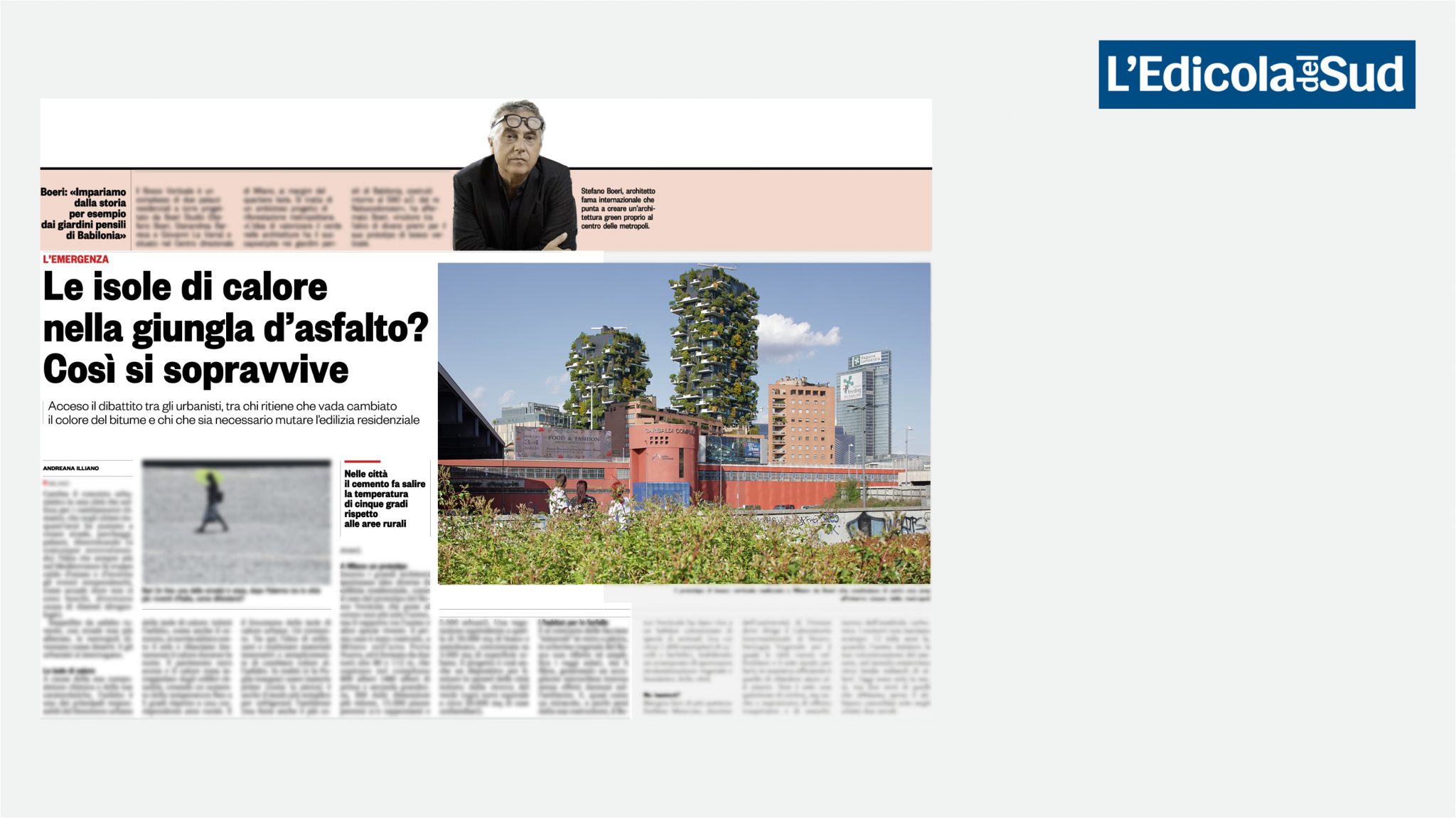
Inside L’Edicola del Sud, an article by Andreana Illiano is published headtitled “Isole di calore nella giungla d’asfalto? Così si sopravvive” (Heat islands in the asphalt jungle? This is how we survive), where the Vertical Forest is presented as a model to be followed to improve the quality of life in the city.
Illiano states that cities find themselves ‘suffocated’ by climate change since the creation of roads, parking lots, buildings, and more generally tree-free asphalt sprawls, have turned metropolises into deserts. Among the solutions, urban planners and architects hypothesize different ideas of housing, such as the case of the Vertical Forest, the building-prototype of a new architecture of biodiversity, which places at the center no longer only humans, but the relationship between humans and other living species.
The first case built, in Milan in the Porta Nuova area, consists of two towers, 80 and 112 m high, housing a total of 800 trees (480 trees of first and second size, 300 of smaller size, 15,000 perennials and/or ground cover plants and 5,000 shrubs). A vegetation equivalent to that of 30,000 square meters of forest and undergrowth, concentrated on 3,000 square meters of urban area.
The project is thus also a device for limiting city sprawl induced by the search for greenery (each tower is equivalent to about 50,000 sq m of single-family houses). In contrast to “mineral” facades made of glass or stone, the vegetal screen of the Forest does not reflect or amplify the sun’s rays, but filters them, generating a welcoming indoor microclimate without harmful effects on the environment.
